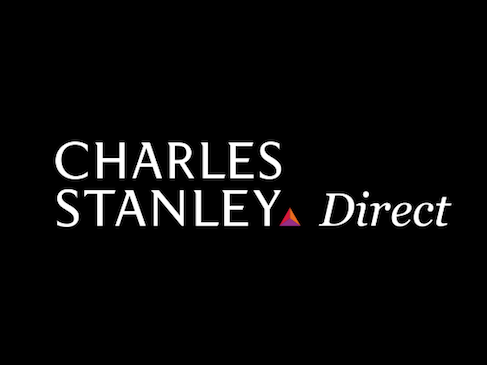It pays to get the lowest price, even after you’d bought something.
Shopping around is key to getting a decent price. You can do this by using comparison sites such as PriceSpy or Idealo. Now, you’d think the next step would be to buy the items at the cheapest shop.
But actually it can be advantageous to actually buy it elsewhere if that shop has a price matching policy. And you can even sometimes price match after purchase if prices dop again.
Here’s more about how price matching works, and where you can take advantage.
Some articles on the site contain affiliate links, which provide a small commission to help fund our work. However, they won’t affect the price you pay or our editorial independence. Read more here.
What is price matching
Price matching is exactly as it sounds. A retailer will sell you an item at a lower price if it’s sold for less elsewhere.
This isn’t just about the listed selling price. You can also often price match voucher codes and sale prices.
John Lewis is probably the most famous shop to offer a price promise, with its “Never Knowingly Undersold” slogan a key part of branding. Though it was closed a few years ago, the department store brought it back in the summer. And it’s not alone – you can also take advantage at shops including AO, eBay and Curry’s.
I’ve done price matching a number of times, from smaller items such as Diptyque candles through to a new TV and sound system. When we did our kitchen a couple of years ago I got our oven, fridge, freezer, dishwasher and flooring for hundreds of pounds less – all thanks to price matching.
And it’s not just “things” you buy that can be price matched. It’s possible to save money on hotels, holidays and other services if you look around. You can even find supermarkets matching the prices on some items sold by competitors.
It’s not just about getting a lower price
Since the price you pay will end up the same you might be thinking surely it’s easier to just buy it at the cheaper shop in the first place and avoid all the hassle.
Well, price matching to a different store might give you additional benefits. These include extended warranties, free delivery or longer return rights.
You might even be able to stack on extra savings on top, such as using a cut-price gift card or cashback. All of these can be worth a little extra, whether financially or just in terms of peace of mind.
Some retailers will beat the lower prices
Also, you might find a retailer will give you extra money off the lower price you find at a competitor.
It’s also worth checking if a high street shop will match its own website if there’s a difference in price (this does happen!).
Price matching after purchase
Best of all, some shops that price match also allow you to price match if prices drop elsewhere after you have bought the item. This is a great trick to use during big sale periods such as Black Friday.
I’ve actually done this a few times – even after I’d already price matched to get a lower price. When the price dropped again I was able to put in another claim and get the additional discount refunded.
So it can sometimes pay to choose a shop that offers this over another even if they are the same price – just in case there’s a significant drop later on.
How to price match
First look for a cheaper price. I tend to use sites such as PriceSpy or Idealo to compare. Or just a quick Google search can do the job.
Every retailer has a different policy, but in general you’ll need to provide proof that you’ve seen the item on sale elsewhere for less. This could be a webpage for an online retailer, or the price matching shop might want to phone up a physical shop.
You’ll also need to check that the shop does price match the place you’ve found the cheaper option. They might only price match certain competitors.
Some retailers will have a phone number you can call to put in your price match claim. Others have a form you fill in.
You generally have to wait for confirmation that your item is price matched before you can buy it, though some let you do it retrospectively. In this instance, you’ll also need to provide proof of purchase.
Once you’ve bought something it’s worth keeping an eye on prices for as long as the price promise lasts. To help you can set price alerts on both Price Spy and Idealo which will email you if the price does drop.










 Featured bank switch deal
Featured bank switch deal














 Customer rating
3.7/5
Customer rating
3.7/5
- Switch bonus£200
- Offer endsUnknown
- Extra bonus£25 Amazon Gift Card
- FSCS Protected? Yes
- Switch bonus requirements Switch using the Current Account Switch Service and close your old account within 60 days of starting the switch
- Deposit requirements Deposit £1,500 in the first 60 days from opening the account
- Direct debits transferred over Set up two Direct Debits before or after the switch from a selected list of household bills
- Existing customers? Can't have held any Santander current account on 1 January 2025
- Restrictions Can't have received a switching bonus from Santander already, offer limited to once per person
- Eligible accounts Open a new or hold an existing Everyday, Edge, Edge Up or Edge Explorer current account
- £25 Amazon Gift Card requirements To qualify for the gift card, you need to complete a full switch using CASS and make five debit card transactions by 31 December 2025
What can stop price matching
However, not all shops have a price matching policy, and they won’t always match every price you find.
The key one to watch out for is retailers that only match certain other shops. Many also exclude online-only retailers (i.e. they don’t want to price match Amazon!). Even some sellers which have a showroom or two can be excluded – often the case for the low prices found online for appliances.
The items will usually have to be the exact same model, colour, size and so on. This can prove frustrating if there’s a slight difference, and many retailers will only sell a version that’s exclusive to them that can be hardly noticeable.
The price must also be available to everyone – which means you wouldn’t be able to match a member or staff discount. Others might not match clearance sale prices, or some voucher code uses.
Items also usually have to be in stock at the cheaper retailer and available for delivery. Or if they’re in smaller local retailers you might find you have to live within a certain number of miles.
You might also find it’s rejected if there’s a difference in extras such as the type of delivery or the length of warranty on offer. For instance, if the cheaper model has one year but the price matching retailer offers two years then the latter can claim it’s not the same package.
Get the best of our money saving content every Monday & Thursday, straight to your inbox
Plus, new Quidco customers get a top paying £20 welcome offer





Where you can price match in the UK
This isn’t an exhaustive list, but I’ve highlighted some of the big retailers across a range of products and services that are worth looking into.
Just because somewhere isn’t on the list doesn’t mean it won’t price match. It’s always well worth asking if a shop has a price promise – even an unofficial one.
If you know of any more retailers that offer this service, then please do let me know via the comments.
All Beauty price matching
You can price match in advance at All Beauty if you find the product for less at selected retailers including Boots, LookFantastic, House of Fraser and The Perfume Shop.
As well as price matching before buying, there’s the option to request a price match seven days after purchase, although this is “at their discretion”.
AO price matching
To price match at AO you need to call their team with the product code of the item you want to buy and the link for where you’ve seen it for less. You can price match up to seven days of buying an item – great if the price drops again.
Retailers price matched:
- UK retailers and websites selling UK products
Beaverbrooks price matching
Beaverbrooks will price match up to seven days after purchase if you find the items advertised cheaper by an authorised stockist with a physical store. Discount and voucher codes will also be matched if they can be verified at the time of reviewing the price promise request
Curry’s price matching
Call up Currys price matching team before you buy and share where you’ve found it for less. Currys will match both high street and online prices, including the use of voucher codes and offers, but not member exclusive discounts.
Normally, you can make a claim up to seven days after purchase, but in 2024 this was extended to cover all of November – so look out for that again this year. If you bought in-store you’ll need to go back there. If it was online you can use a webchat.
Retailers price matched:
- Any UK retail store or website
eBay price matching
You can even price match at eBay! It’s only for new items sold on the Amazon, Currys, Argos, Asda, John Lewis and Tesco websites. You apply online and if successful will be sent a voucher to use on your purchase within 24 hours.
You can only ask for one price match per day per eBay user and it’s only in advance of purchases – not after.
Retailers price matched:
- Amazon.co.uk
- Currys.co.uk
- Argos.co.uk
- Asda.com
- JohnLewis.com
- Tesco.com
Euronics price matching
Euronics offer an in-store only price match guarantee and may include discount codes advertised by competitors. The price match policy is only available prior to order completion and can not be claimed back after the purchase.
Goldsmiths price matching
Goldsmiths jewellers offer a price match promise, in-store and online. For in-store price matches, the competitor must be within 15 miles of the store the price match is requested in. For online price matches, the competitor must be a national authorised stockist.
Go Outdoors price matching
You’ll get 10% back on top of the difference. However you do need to have a Go Outdoors Discount Card which costs £5 a year.
Halfords price matching
With Halfords it’s just the published selling price that is price matched – so you can’t use any additional vouchers or offers on top, such as buy one get one free or clearance. You’ve seven days after purchase to make the claim.
You can also price match instore if the items is sold for less on the Halfords website.
Retailers price matched:
- UK based
- Within 10 miles if price matching a service
H.Samuel price matching
H.Samuel is another jeweller that offers a price match promise online where they will price match jewellery or watches if you find them at a lower advertised price.
There is an easy online form to submit before purchase, but for in-store purchases I can only find information about price matching watches which they will do in over 300 stores nationwide
Hughes Electrical price matching
You can phone Hughes Electrical or use a live chat or webform to request a price match before or up to seven days after purchase.
They’ll match:
- AO
- Appliances Direct
- Argos
- Currys
- Marks Electrical
- Richer Sounds
Jessops price matching
Jessops only price matches against prices at authorised retailers for the brands they stock. It won’t match clearance prices.
Retailers price matched:
- Argos
- Currys PC World
- Park Cameras
- WEX
They also run a Black Friday price promise where they’ll refund the difference if your purchase with made between 1 and 28 November 2024 with is reduced during those dates.
John Lewis price match
The John Lewis Price Promise that returned in September 2024 was different to the one we were all used to pre-2022. For a start it’s limited to seven rather than 35 days after purchase to make a claim.
And the other change is only 25 retailers will now be accepted – though that does include Amazon now. We’ve gone into more detail how John Lewis price matching works in a separate article.
Richer Sounds price matching
If you buy with Richer Sounds and find it cheaper you’ll get an extra discount on top of the difference up to 14 days after purchase. You can also price match in advance.
The beat the difference promise ranges from £5 extra on products up to £300, through to £100 on anything over £4001.
Price promises
In addition, some retailers will refund the difference if they drop their own prices after you’ve made your purchase. This is usually just over a sale period, such as Black Friday and Prime Day.
Argos price guarantee – Black Friday
If prices drop before Christmas at Argos you’ll get a voucher for the price difference.
















